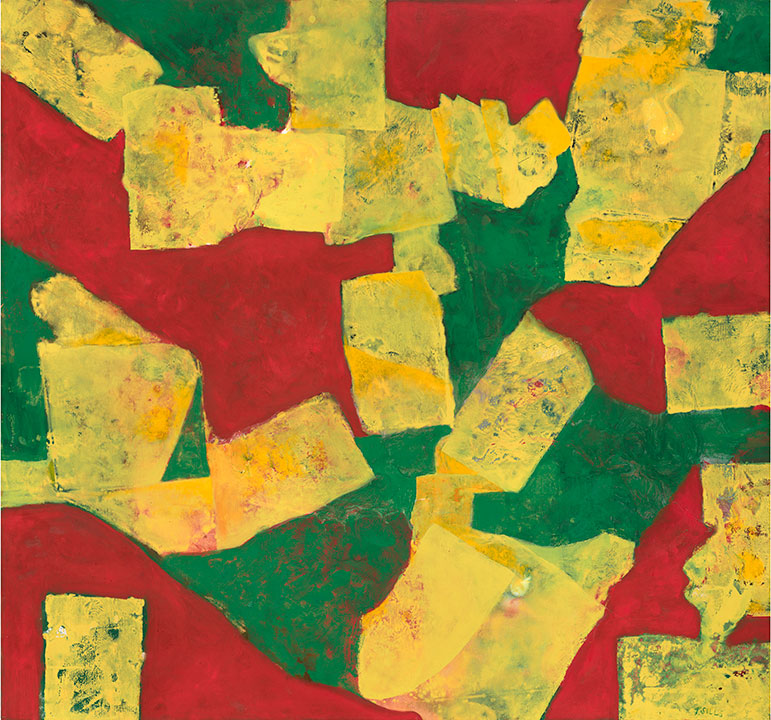Acquisition: Thomas Sills

Thomas Sills
Flagship, 1961
oil on canvas
overall: 167.64 x 177.8 cm (66 x 70 in.)
National Gallery of Art, Washington
Gift of John and Mary Pappajohn
2022.139.1
One of only a few African American participants in the abstract expressionist movement, Thomas Sills (1914–2000) has been largely overlooked until recently. Donated by John Pappajohn, the painting Flagship (1963) epitomizes the distinctive style and technique Sills developed to create elegant abstractions with a limited palette and disciplined forms.
A large horizontal painting, Flagship consists of red, green, and yellow rectangular shapes that form a jigsaw-like or map-like composition. Applied with rags, cloths, and knives, the paint has an uneven texture and mottled appearance. In addition to increasing the National Gallery’s holdings of abstract work by African American postwar artists, Flagship makes important connections with the collection—for example, between European modes of abstraction, as seen in the work by Pierre Soulages from the 1950s, and the more aggressive facture employed by such Americans as Clyfford Still.
Born and raised in Castalia, North Carolina, Sills began painting in 1952, inspired by his wife Jeanne Reynal, a mosaic artist who introduced him to Marcel Duchamp, Max Ernst, Willem de Kooning, Barnett Newman, and Mark Rothko. In his earliest paintings, Sills used a variety of tools to apply paint and other materials to the surface in an automatist approach. By 1955 he had developed a unified group of paintings with central forms suggesting birds, nests, apertures, nebulae, and eyes included in his first solo show at the Betty Parsons Gallery in New York. By the mid-to-late 1950s, Sills had fully embraced abstraction, inspired in part by John Graham’s book, Systems and Dialectics of Art. These works are notable for their limited palette, large rough-hewn forms, and equivalence of figure and ground.
Between 1955 and 1961 Sills had four solo exhibitions at Betty Parsons. In the 1960s and early 1970s, he showed with Bodley Gallery, New York, and had solo exhibitions at Creighton University, Omaha, and the Art Association of Newport. Sills was also included in several important museum exhibitions of African American artists in the 1960s and early 1970s. In the mid-1970s, he made a series of “White Paintings” comprised of forms and shapes painted in beige, light gray, and white. His work can be found in the collections of the Museum of Modern Art, the Whitney Museum of American Art, the Metropolitan Museum of Art, the San Francisco Museum of Modern Art, and the Los Angeles County Museum of Art.
Contact Information
General Information
For additional press information please call or send inquiries to:
Department of Communications
National Gallery of Art
2000 South Club Drive
Landover, MD 20785
phone: (202) 842-6353
e-mail: [email protected]
Newsletters
The National Gallery also offers a broad range of newsletters for various interests. Follow this link to view the complete list.